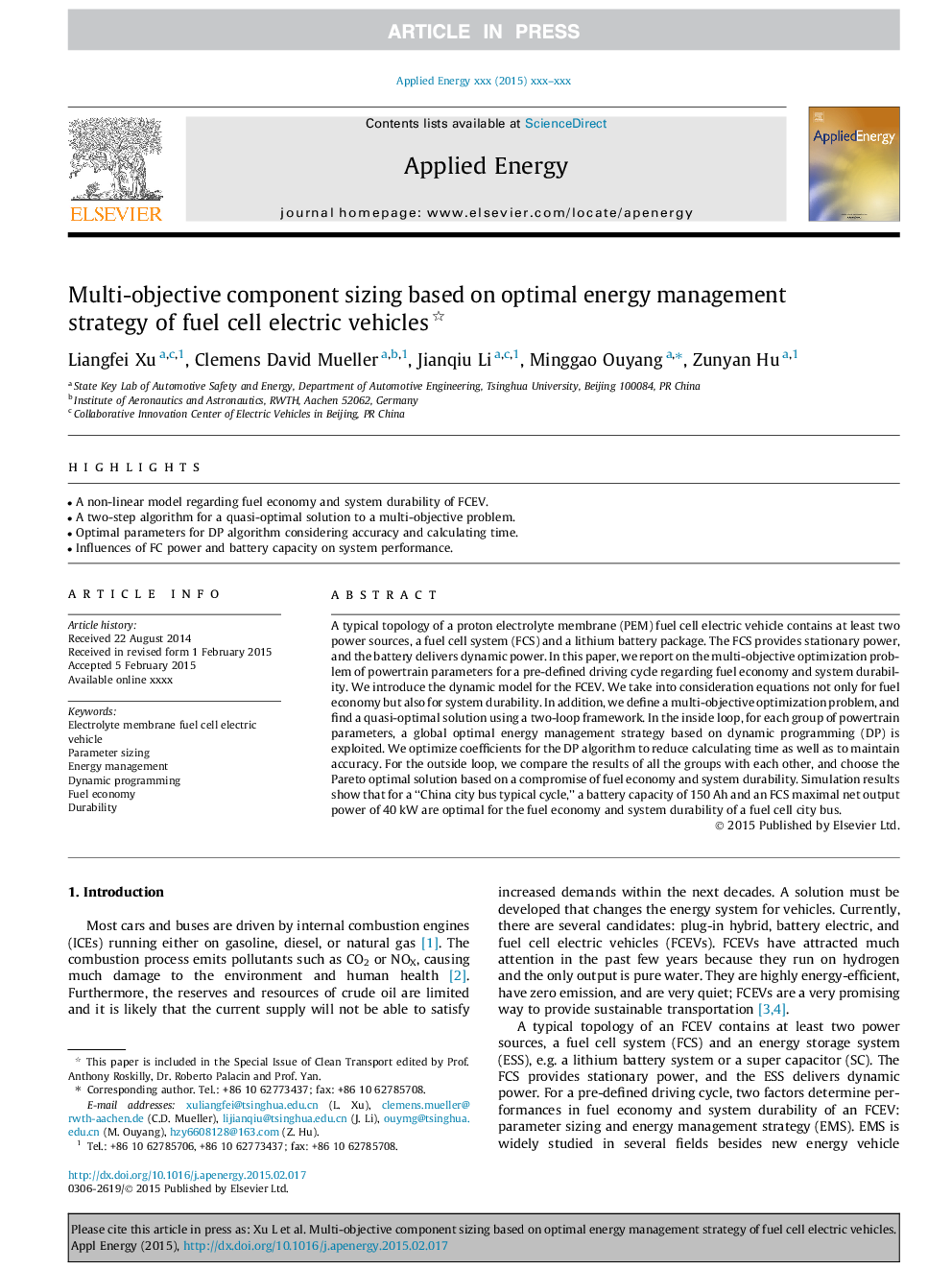| Article ID | Journal | Published Year | Pages | File Type |
|---|---|---|---|---|
| 6686045 | Applied Energy | 2015 | 11 Pages |
Abstract
A typical topology of a proton electrolyte membrane (PEM) fuel cell electric vehicle contains at least two power sources, a fuel cell system (FCS) and a lithium battery package. The FCS provides stationary power, and the battery delivers dynamic power. In this paper, we report on the multi-objective optimization problem of powertrain parameters for a pre-defined driving cycle regarding fuel economy and system durability. We introduce the dynamic model for the FCEV. We take into consideration equations not only for fuel economy but also for system durability. In addition, we define a multi-objective optimization problem, and find a quasi-optimal solution using a two-loop framework. In the inside loop, for each group of powertrain parameters, a global optimal energy management strategy based on dynamic programming (DP) is exploited. We optimize coefficients for the DP algorithm to reduce calculating time as well as to maintain accuracy. For the outside loop, we compare the results of all the groups with each other, and choose the Pareto optimal solution based on a compromise of fuel economy and system durability. Simulation results show that for a “China city bus typical cycle,” a battery capacity of 150Â Ah and an FCS maximal net output power of 40Â kW are optimal for the fuel economy and system durability of a fuel cell city bus.
Related Topics
Physical Sciences and Engineering
Energy
Energy Engineering and Power Technology
Authors
Liangfei Xu, Clemens David Mueller, Jianqiu Li, Minggao Ouyang, Zunyan Hu,
